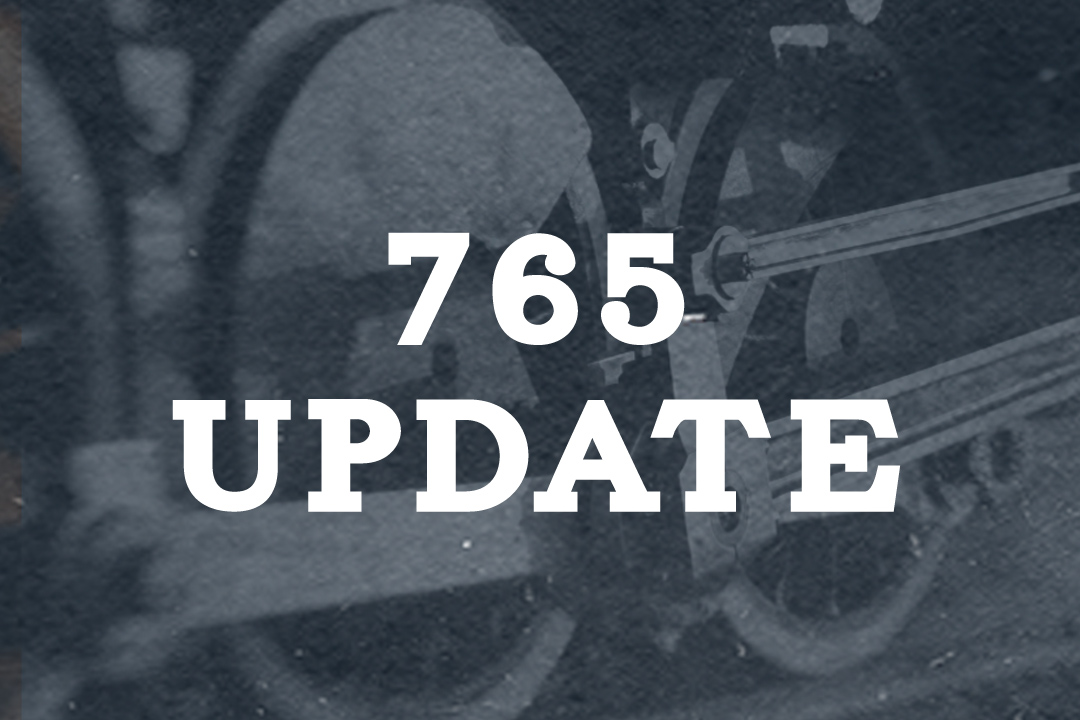Submitted by Steve Winicker.
LAST WEEKENDS SHOP ACTIVITY
Friday John was able to bore holes in three spring hangers for the gib pins. Work on the others will continue as time permits. John and I also picked up the pedestal liners for the trailing truck. Initial indications are they will fit but we will check them out tomorrow.
Saturday most of the trailing truck was scaled to remove paint with quite a bit of success. The pedestal liners appear to fit on the faces fairly well but have varying amounts of lateral gap of up to an 1/8 inch, Tyler Kester ground out some cracks we found in the trailing truck frame. Jeff and Austen Rayner finished drilling out the tell tale holes and blowing them out so they should be clean and ready for a hydrostatic test which we will be scheduling as soon as we get the trailing truck ready to slide back under. Broady got rid of a lot of scrap wood in our burn pile.
The same events continued Sunday along with some mowing of grass.
UPCOMING ACTIVITIES
We will hope to finish up boring gib pin holes in the spring hangers possibly get some additional measurements on the trailing truck pedestal liners.
SAFETY SENSE
May is National Electrical Safety Month. Electrical hazards on the job can be avoided by following approved NFPA 70E and OSHA guidelines. Attention to safety is the important first step to an effective safety program.
Skilled workers, familiar with electrical safety procedures, should make sure they understand and follow all safety precautions. Those not trained to recognize and avoid electrical hazards, or not under the supervision of those qualified in electrical safety procedures, should avoid contact with electrical equipment and systems.
- Understand the construction and operation of the electrical equipment and the hazards involved.
- Identify all possible energy sources that could pose on-the-job hazards.
- Know safety requirements and follow them.
- Select the appropriate personal protective equipment (PPE). Remember, PPE must be worn until the electrical system is in a safe condition.
- Complete a detailed job plan and communicate it to all coworkers.
- Before working on or around electrical systems or equipment, identify the load circuits and disconnect. Remember, in some cases, turning power off may cause other hazards. Such hazards and additional guidance should be addressed in your work plan
- Use lock-out/tag-out procedures ie, use the Societies RED TAG procedure.
- Verify that the equipment or system has been de-energized by testing.
- Make sure your test equipment is working, both before and after you use it.
- If at any time the job becomes more hazardous than anticipated, STOP and revise the plans.
Above all, never assume that the equipment or system is de-energized. Remember to always TEST BEFORE YOU TOUCH.
SAFETY IS JOB 1
SAFETY FIRST ALWAYS


